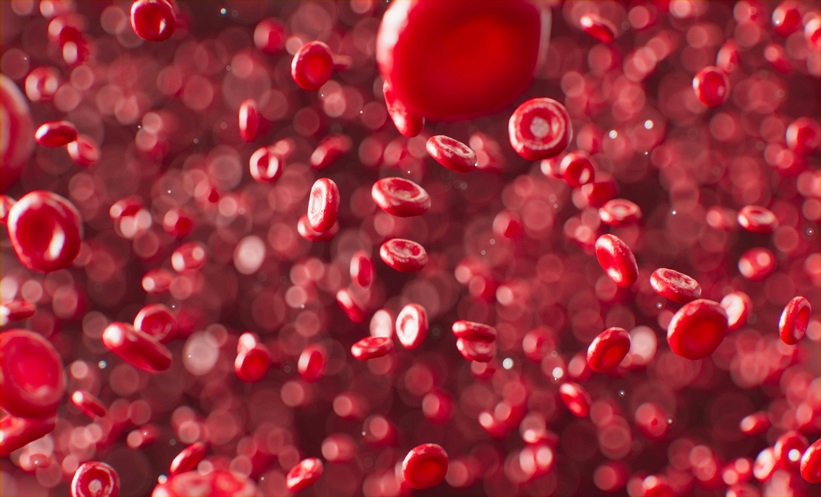Author: Natasha Meunier-McVey, Editorial Assistant
Citation: 2022;10[1]:16-19. DOI/10.33590/emjhematol/10161940. https://doi.org/10.33590/emjhematol/10161940.
![]()
MILLIONS of women across the world opt for hormone-based therapies for contraception, and as a replacement therapy for relieving symptoms during the menopause. Many of these treatments involve daily ingestion of hormones over extended periods of time. This timely session which took place at this year’s European Hematology Association congress 2022 (EHA2022) involved expert discussion and perspectives on the impacts of hormone-associated venous thrombosis (VT) on females, including the effects of different therapies and their progression in recent times. Taking place between 15th–17th June 2022, EHA2022 explored timely content in the field of haematology, both live from Vienna, Austria, and virtually.
MECHANISTIC INSIGHTS INTO HORMONAL THERAPY
Per Morten Sandset, Principal Investigator of Thrombosis and Haemostasis, Oslo University Hospital, Norway, opened this fascinating session with a summary of the indications for hormonal therapy, namely contraception and replacement therapy, and the current types of hormonal therapy available to women. With oestrogen-based therapies and progestin-based therapies primarily offered as the most common forms of hormonal therapies, Sandset highlighted the risks associated with both types, and the progression in the production and dosing of these pharmaceuticals.
Sandset went on to discuss the mechanisms and risks associated with venous thrombosis in the context of hormonal therapy. He presented key angiographic images, including that of an arterial thrombosis of the internal carotid artery that would typically be seen in young women taking oral contraceptives. Sandset highlighted that the risks of developing arterial or venous thrombosis are dependent on the thrombotic threshold: “The haemostatic system must be efficient enough to provide haemostasis in the case of bleeding,” which is strongly influenced by age, family history, and factors such as antithrombin deficiency. Oral contraceptives have a major impact on the haemostatic system and coagulation cascade, with a 20–70-year-old woman’s risk of VT increasing by 50-fold when taking these hormonal medications.
Sandset presented key studies that have investigated the effects of oestrogen therapies on key haemostatic markers, which demonstrated that even marginal changes in clotting factors and inhibitors leading to an increase in thrombin generation can significantly impact the system, even if prothrombin does not exceed the normal range. Amongst the effects of hormonal therapy on the haemostatic system presented, Sandset emphasised the impact of these treatments on normalised activated protein C resistance (nAPCsr). Used as a biological marker for the risks of oral contraceptives and post-menopausal hormonal therapy, the data presented displayed the correlation between nAPCsr and the risk of VT. Compared with no combined oral contraceptives, second generation ethinylestradiol treatment led to a medium risk of VT, whereas third generation treatment was associated with a high risk of developing this condition.
CLINICAL RISKS OF VENOUS THROMBOEMBOLISM
A selection of large epidemiological studies highlighted the effects of different hormonal contraception options on the risk of VT; notably, the use of a patch presented with an 8-fold increase in risk compared with non-use. The risk of developing VT in older women undergoing hormone replacement therapy also increased by 8-fold compared with placebo. In terms of continuing hormone therapy alongside anticoagulant therapy to treat occurrence of VT, Sandset remarked the results of a trial, which demonstrated a low risk of VT recurrence with continued therapy.
Sandset presented common mutations that lead to thrombophilia, and discussed whether these should be routinely screened for in women taking combined oral contraceptives. Loss-of-function mutations lead to antithrombin deficiencies, and protein C and S deficiencies, whereas gain-of-function mutations are known to lead to polymorphisms in the prothrombin gene, and the factor V Leiden gene. It was noted that there was a 34-fold increase in the risk of VT in women with specific inherited mutations; however, Sandset explained the lack of benefit to routine screening for inherited thrombophilia. Key statistics from a study showed that between 10,000 and 100,000 women in the general population would need to undergo screening to prevent one case of VT. A BMI of over 30 was also highlighted as a key risk of VT development from oral contraceptive use, presenting with a 24-fold increase in risk.
PREVENTION AND TREATMENT OF VENOUS THROMBOEMBOLISM IN PREGNANCY
Sabine Eichinger, Associate Professor and Head of Anticoagulation Clinic, Medical University of Vienna, Austria, gave a presentation on VT during pregnancy. The risk of VT is significantly increased throughout pregnancy; however, the highest risk is during the first 6 weeks postpartum, with a 5-fold increase compared with during pregnancy.
Eichinger explained how the risk of VT during pregnancy is increased in the mother entering into a prothrombotic state, influenced by altered haemostasis, vascular injury, and altered rheology. The activation of the haemostatic system leads to increased fibrin generation and increased fibrinolysis due to the surge in various factors. Eichinger presented her findings from a prospective study of healthy females during pregnancy, focusing on levels of the fibrin degradation product, D-dimer. From 12–34 weeks of gestation, the participants’ D-dimer levels consistently increased, which Eichinger explained was likely due to the body preparing for childbirth. The risk factors for VT development during pregnancy must also be considered, and those presented included pre-existing VT, a family history of the condition, and pregnancy complications; it was also highlighted that there is an increased risk of VT following a caesarean section.
ANTICOAGULANTS DURING PREGNANCY
The most favourable choice of treatment for VT during pregnancy according to the American Society of Hepatology (ASH) guidelines are low molecular weight heparins (LMWH). The guidelines recommend either once-daily or twice-daily dosing, with observational studies indicating a <1% incidence of VT bleeding with these treatments, and no difference between the two regimens. Eichinger noted however, that the available data in females who are pregnant is very limited.
Although the ASH guidelines do not recommend the routine monitoring of anti–factor Xa levels to guide LMWH dosing in females who are pregnant due to the lack of beneficial evidence, Eichinger explained that she employs this technique in cases of females who are pregnant with extreme body weight, severe renal function impairment, and antithrombin deficiency. In terms of the management of LMWH treatment at the time of delivery, anticoagulant treatment should be halted 24 hours prior to a caesarean section or natural birth, and should only be restarted on a prophylactic dose 6–8 hours following this. It was emphasised that the full therapeutic dose should not be given until 12–24 hours postpartum.
Eichinger concluded the session with information on prophylaxis use in females who are pregnant, both with and without prior VT. The ASH guidelines advise prophylactic treatment both ante- and postpartum in females who are pregnant with prior VT, except in cases of females who have experienced prior provoked VT with non-hormonal risk factors. Several considerations are taken into account when making recommendations in females who are pregnant without prior VT, dependent on the factor causing hereditary thrombophilia, and whether the patient has a past history of VT.
CONCLUSION
Providing expert insight and guidance from guideline recommendations will help both patients and healthcare professionals make informed decisions about prescribing hormone therapies, both during pregnancy and as a form of contraception.








